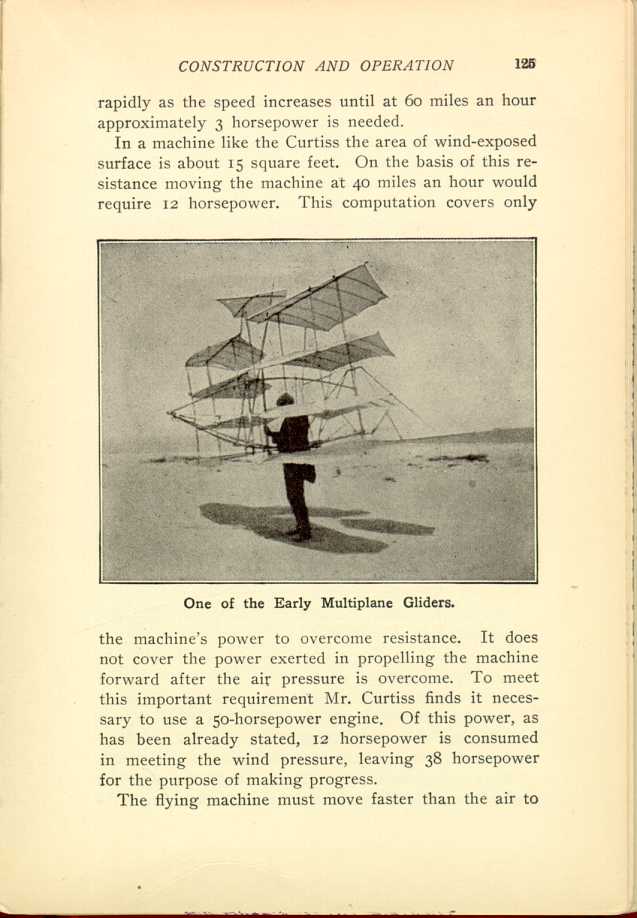How to Determine Upon Power.
This element of air resistance must be taken into consideration in determining the engine horsepower required. When the machine is under headway sufficient to raise it from the ground (about 20 miles an hour), each square foot of surface resistance, will require nearly nine-tenths of a horsepower to overcome the wind pressure, and propel the machine through the air. As shown in the table the ratio of power required increases
In a machine like the Curtiss the area of
wind-exposed
surface is about 15 square feet. On the basis of this
resistance moving the machine at 40 miles an hour would
require 12 horsepower. This computation covers only

One of the Early Multiplane Gliders.
[Description: Black and white photograph: Man in glider with multiple rows
of wings.]
The flying machine must move faster than the air to
Take another case. An aeroplane, capable of making 50 miles an hour in a calm, is met by a head wind of 25 miles an hour. How much progress does the aeroplane make? Obviously it is 25 miles an hour over the ground.
Put the proposition in still another way. If the wind is blowing harder than it is possible for the engine power to overcome, the machine will be forced backward.